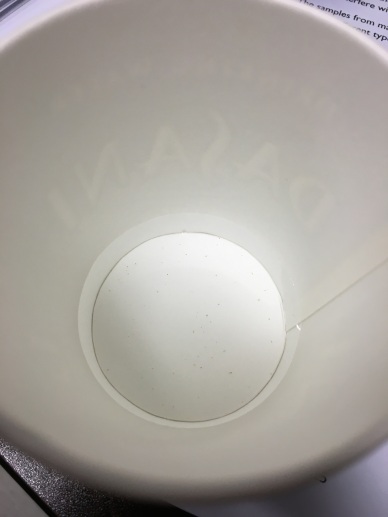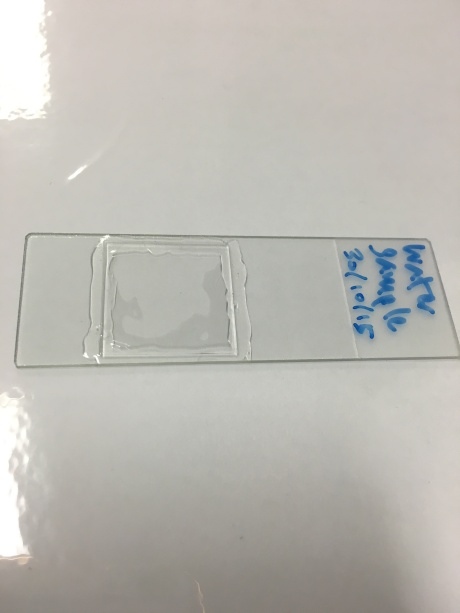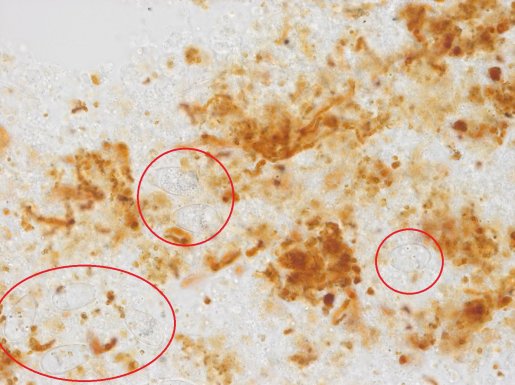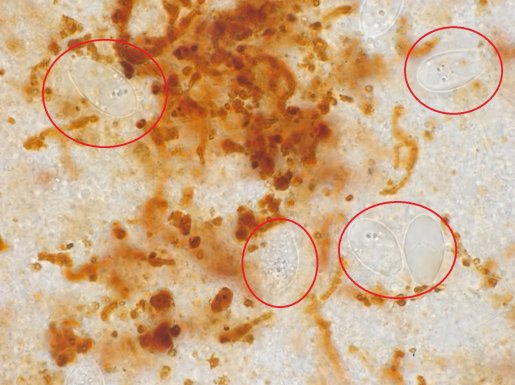So I was having our lunch meeting at work. Whilst zoning out during the meeting, I noticed some black specks in my water. “What are all this crap?”, I thought to myself. Did I walk pass some place filthily dusty? Or did I take a dirty disposable cup?

Dirt having a blast in my cup. Can you see the small black specks?
The problem was, pretty much everyone in the meeting has taken water from the same water dispenser and used the same cup dispenser. I discreetly gave a disgusted look every time I saw someone took a sip. But secretly being the sadist that I am, I couldn’t help it but to grin. It was not exactly my fault if my colleagues were not as observant as me. And anyway it was rude to interrupt a meeting with something like this. Surely, this is not as important as the meeting? Trying to comfort myself and telling myself it was not selfish, thankfully I did not drink as much of the water as I could have.
After the meeting however, I told one of my colleagues and showed her my cup. I asked her if she had the same in hers. And she gasped, “Oh my goodness, I finished mine!”

Being the nerd that I sometimes am, I quickly hurried to get my sample (the water in the cup) and prepared my slide. I took a glass slide. Pipette out a small amount of the “dirt” water, possibly 1 or 2 microlitres, onto the glass slide. Took a cover slip and placed it on top of the water and sealed it with a very scientific sealant, a clear nail varnish.

The humble glass slide I prepared.
I work with abundance of microscopes daily and immediately got cracking on one of the simpler compound microscope that we have in the microscopy suite. It was a Zeiss AxioImager Z1. The pictures below were some of the few that I managed to capture.

Magnified 50x.
Nasty, much? That is just one black speck. Didn’t expect it to be brown.

Magnified 200x.
Can you guys guess what is actually the nasty stuff?

Magnified 400x. Circled regions are the unicellular organisms.

Magnified 1000x.
As you can see, there was a party going on in my cup. I found what seemed to be some kind of unicellular organism. What exactly is it? Is it harmful? One thing for sure is that it sure looks disgusting amongst all the brown stuff. Sorry organism but I have to respectfully decline the party.

On a more serious note, different microorganisms can cause diseases. Rhizopus stolonifer, Rotifers, E. coli, Salmonella are some of which that can contaminate tap water. The pathogenesis for some of them can be detrimental in a way that they could release toxins into the body or lay eggs in the intestines or they may have simply found a new home.
What I could have done is to perhaps make a simple experiment and culture it to let the organism grow. On top of this, I could have stained them with fluorescent dyes to target some proteins that are specific to the dye. I could have cultured a few batches and played around to stain different proteins; after which I can see if they’re harmful and can also figure out what exactly is the name of this organism. Alas, I don’t have as much time as I would like at work. I did keep them as my pet on my work desk for a few weeks though. HAH!
So it is very important to make sure to use a good filtration system or to boil the water beforehand. Our office water were bought from a reliable company so it could also be that our filtration system is old. Not to worry however, as I have informed my facilities team and they have changed all the bottles and have informed the company. Moreover, they have changed the filters.
Well, sometimes being annoying and observant pays off. It might just save you!
What could be the brown specks themselves? Any idea? Will you find the “unicellular organisms” in areas devoid of the brown stuffs?
LikeLike
The brown stuff could be dust coming from the old filter system but I don’t know for sure. Unicellular organisms can definitely occur devoid from the brown stuff. You can find lots of unicellular organisms in uncontaminated pond water.
LikeLike